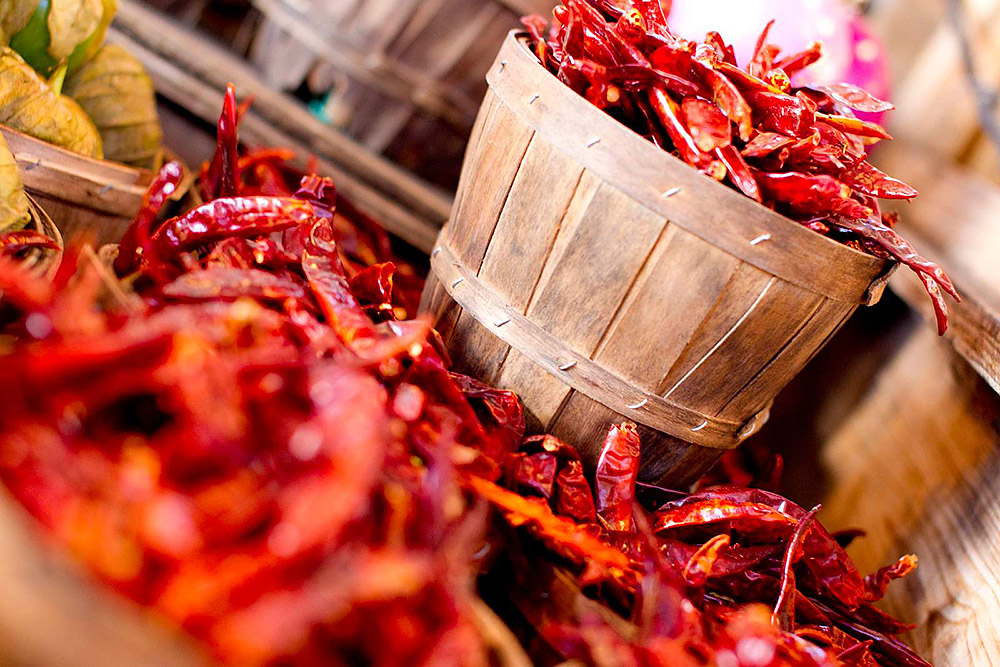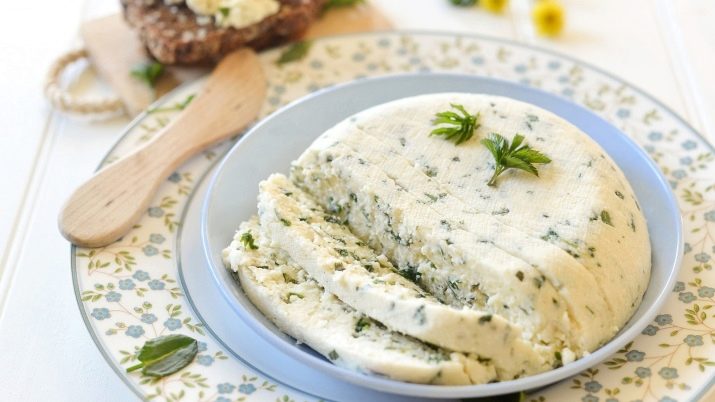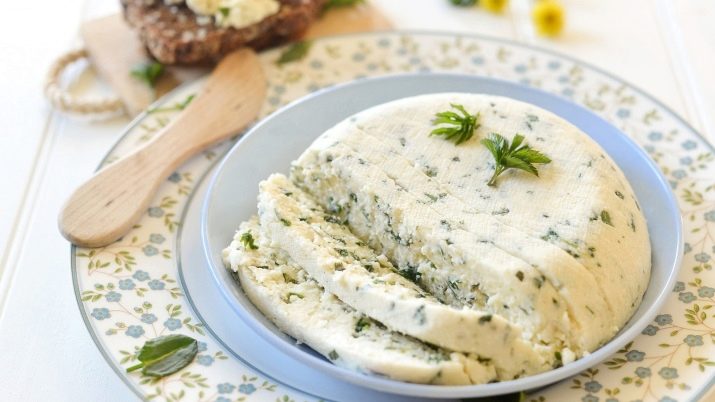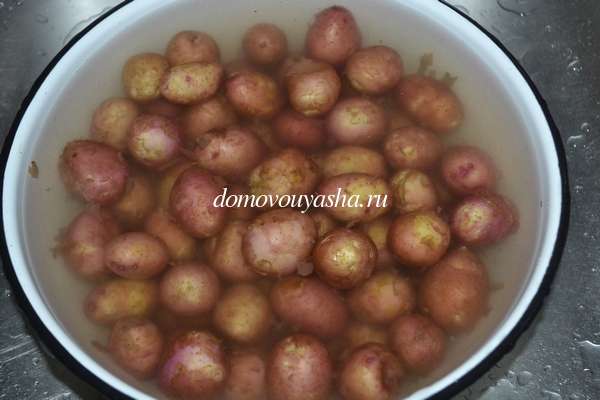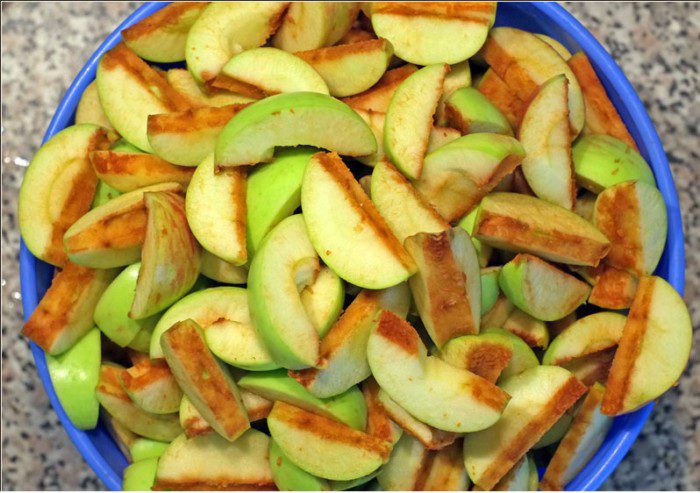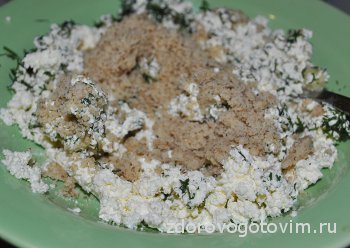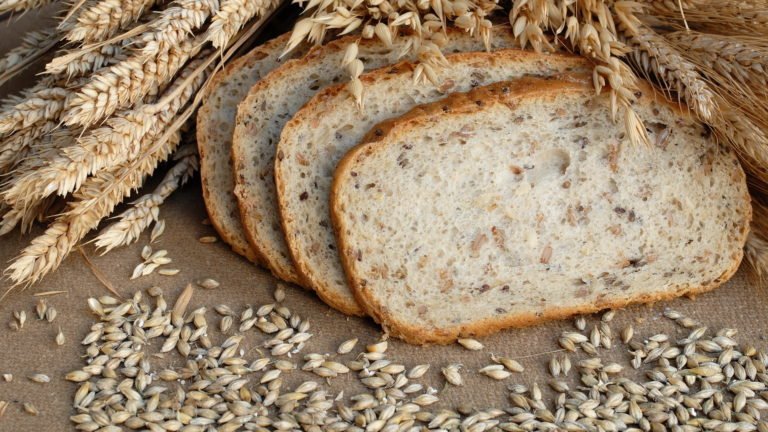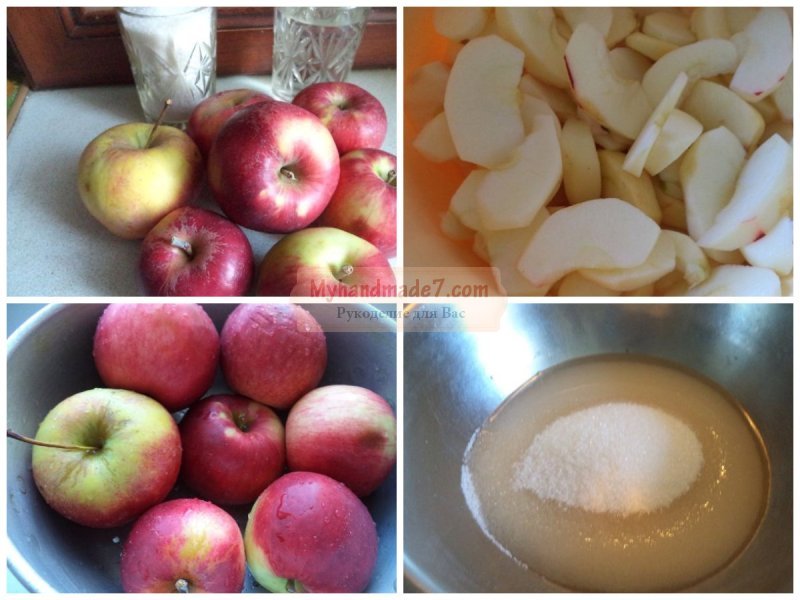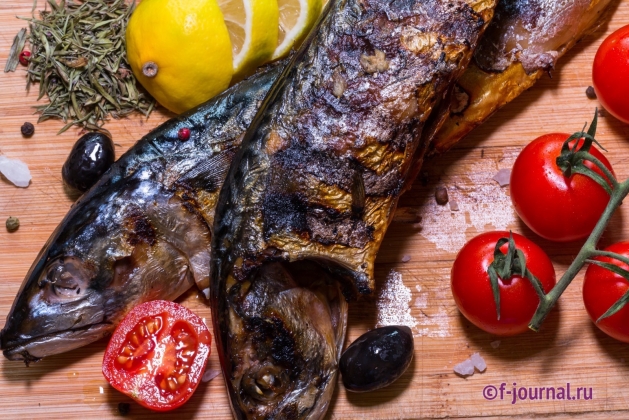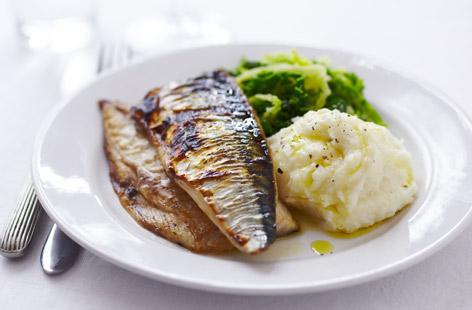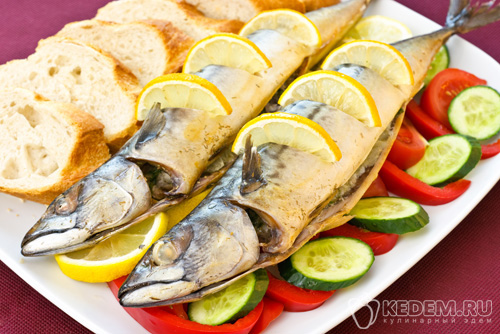Bread on dough recipe without yeast. Rye sourdough for bread
Recently, we are increasingly confronted with disputes about the benefits and harms of such a product that we need as bread. Of particular doubt is the presence of yeast in its composition: they say, it is harmful to the body and does not add beauty, and digestion makes it difficult. Therefore, today we will learn how to cook yeast-free bread in various ways, and the oven will help us in this.
Features of yeast-free bread
As the name implies, such bread is made without the use of baker's yeast. The dough is kneaded on the basis of yogurt or kefir, brines with the addition of soda, which provides fermentation in an acidic environment. More often they use special starter cultures. It is these products that raise the dough and increase it in volume, due to which the bread becomes soft, elastic.
Fans of a healthy lifestyle categorically do not welcome the presence of live yeast in their diet. And such baking is really very useful. Bread contains cellulose, which favorably affects peristalsis - you will get rid of the feeling of heaviness in the stomach after eating and normalize metabolism.
Yeastless bread is really very healthy
Note! Low acidity of yeast-free bread on hand for those who have problems with the gastrointestinal tract: gastritis or ulcer. The vitamins of group B and PP contained in this product will save you from troubles with face skin, hair and nails.
In addition, unleavened bread, cooked independently, is stored much longer than usual, bought in a store. Of course, if they don’t eat it right away, as soon as they get it out of the oven (most likely, it will be so, I assure you).
Essential Ingredients
As in any baking, in the manufacture of yeast-free bread, the main ingredient is flour. And depending on the recipe, it is very important to choose its type: rye, wheat, corn, buckwheat, barley, bran. Carefully follow the recommendations of the recipe: sometimes using, for example, wheat flour instead of rye can spoil the finished product.

For yeast-free bread use flour of any cereal crops
Since live yeast is not used, then plain water for dough is not suitable. Instead, dairy products or brines are used, to which soda is added. Yeast-free bread is also prepared with sourdough. Below we will tell you how to do it correctly. If you decide to bake yeast-free bread constantly, the leaven should always be at hand.
Salt and sugar are a must for dough. But in this case, they play only a taste role. Sugar is involved in the formation of the test only paired with yeast.
Very often yeast-free bread is supplemented with bran, whole grains, malt, seaweed and other products. These additives increase the benefits of bread for our body by an order of magnitude.
Depending on the recipe, other products will be added to the dough: eggs, butter, milk, etc. And now, as promised, we will tell you about the preparation of sourdough.
Eternal Ferment
There are a lot of starter options for every taste. We suggest you start with the simplest but most effective. It will require:
- 300 g flour (preferably rye);
- 300 g of water.
- Day 1. Combine the water with flour in a deep bowl or pan, stir well until the consistency of thick sour cream. Cover with a piece of damp cloth, put in a place where it is very warm, there are no drafts. Harvesting should roam during the day. Stir it from time to time and watch when small bubbles begin to appear.
- Day 2 Sourdough needs top dressing. Add 100 g flour and pour in enough water so that the consistency returns to the previous one. Cover the workpiece again and return to the same warm place for a day. Do not forget to stir and watch the bubbles.
- Day 3 Now with the naked eye you can see that the leaven is working. It increased in size and the whole was covered with bubbles. Feed it one last time (as in the last paragraph) and place it in the heat again. Take a look from time to time: you need to not miss the moment when the sourdough grows 2 times from the previous volume. At this point, the mass must be divided in half. One part can be immediately used - prepare bread dough on it. Fold the other half in a jar, cover with a lid and place in the refrigerator. When you need to - take half of it, feed it again and put in heat.

Ferment must always be at your fingertips.
That’s the whole secret of the simplest sourdough that will help you prepare delicious and healthy bread for a long time.
Sourdough Video Recipe
Step by step recipes for making homemade bread without yeast in the oven
Do you think yeast bread is monotonous and boring? And no! There are a lot of recipes for this product, and if you also apply your imagination, there will not be enough life to try everything. We have selected for you several common, simple and interesting ways of making such bread.
Classic recipe

Loaf of White Yeast-Free Bread
A very simple way to bake delicious leavened bread with a standard set of products:
- 600 g of wheat flour;
- 250 g of water;
- 3 tablespoons of vegetable oil;
- 2 tablespoons of sugar;
- 2 teaspoons of salt;
- 7 tablespoons of sourdough.

To make the crust on the bread shiny, coat the top of the loaf with vegetable oil and put it in the oven for another 5-10 minutes.
Video recipe for classic yeast-free wheat bread
White Bread Serum
Such bread is not only very tasty, but also hearty. It is made according to a recipe similar to those used by our great-great-grandmothers. You will need the following products:
- 3 cups of wheat flour;
- 550 ml of serum;
- 2 teaspoons of sugar;
- 2 tablespoons of vegetable oil;
- 2 tablespoons of sesame;
- 2 teaspoons of salt;
- ¼ teaspoon of soda;
- 9 tablespoons of sourdough.
Please note that flour, whey, butter, as well as dishes in which you will stir the dough, should be warm. To warm the flour, sift it in a suitable dry dish, put in a warm (up to 60 degrees) oven.

Serum bread was made in ancient times.
- Take a deep bowl or pan, pour 1 cup of wheat flour into it.

Pour wheat flour into the dishes
- Put the leaven on top - 9 tablespoons.

Add leaven
- Now add the remaining 2 cups of flour, salt, sugar and soda. Pour 250 ml of whey, preheating it, and vegetable oil.

Add other products
- Mix all the ingredients well so that the batch is thick and sticky. To work with it further, you need to properly lubricate your hands with sunflower oil.

Knead the dough
- You can bake bread in special forms, and if you do not have them, then simply form a loaf or small rolls with your hands. Cover forms or a baking sheet with parchment paper greased with vegetable oil, spread the dough in equal parts. Cover with a towel and put in a warm place for a couple of hours. During this time, the dough should increase in volume at least twice.

Forms or baking sheets for the dough should be laid with parchment paper
- Take a look at the test so that it does not run away. It is light, quick to rise, it can easily “make legs”, as the people say. Even if this happens, don't be upset. With a sharp knife, carefully trim the excess dough that escaped from the mold and make a flat cake out of them. It can also be baked.
- Moisten the future bread with water and sprinkle with sesame seeds. Or caraway seeds, flaxseed, sunflower seeds, anise - to your taste. Send to an oven preheated to 200 degrees. Place a pan of water on the lower tier to prevent the bread from sticking and saturate it with moisture during baking. Cooking time is 50 minutes.

Top with bread can be sprinkled with sesame seeds or caraway seeds
- If you like a hard crust, take out the bread immediately after it is baked. You can leave the loaf inside until the oven cools down, then the crust will be soft and tender.

To make the crust firm and crisp, take the bread out of the oven immediately
See how vibrant and resilient bread is. Sourdough paired with whey makes it unusually fragrant, loose, soft.
On kefir
Kefir has long been known to us for its beneficial properties. In yeast-free bread, it acts as a sourdough. Take the following ingredients:

This recipe is for 4 servings.

Bake bread for at least half an hour in an oven heated to 200 degrees. Check readiness with a match or a toothpick. Take out the finished loaf, cover with a clean cloth and wait until it cools completely.
Video about making yeast-free kefir bread
On brine

Spicy and fragrant pickle will be an excellent basis for yeast-free bread
This bread can be tasted different every day. It depends on the brine included in the dough. It can be cucumber, cabbage, tomato, infused with dill, caraway seeds, vinegar.Someone recommends taking a not very sour pickle, someone likes a more spicy one. It all depends on your taste, you can experiment to choose the most suitable option. So, you will need:
- 300 g of brine;
- 120 g peeled rye flour;
- 350 g of wheat flour;
- 1 teaspoon of soda;
- 10 g of salt;
- 15 g of sugar;
- 2 teaspoons of vegetable oil;
- 2 teaspoons of sesame or caraway seeds.
Heat the brine a little, salt it and add rye flour. Stir and let the mixture rise for 20–25 minutes.
- Enter sugar and start kneading the dough, gradually adding wheat flour. The mass should be soft, slightly sticking to the hands. Cover it and leave it in a warm place.
- The dough should become more than 2 times. Once this has happened, put it in a mold with your hands dipped in vegetable oil. Sprinkle with sesame seeds or caraway seeds. Cover again with a towel and leave for 30 minutes in a warm place.
- Put the mold with the dough in the oven, heated to 190 degrees. Baking takes about 25 minutes.
You can check the readiness by tapping on the crust. If the sound is dull, but distinct, then the bread is ready.

The bread on the brine rises well and turns out to be tasty, fragrant, lush
In milk
If you do not have much time, and there are enough products to surprise relatives and friends, we suggest you cook yeast-free bread in milk with vegetable additives.
Required Products:
- 400 g flour;
- 50 g of oatmeal;
- 175 ml of milk;
- 175 ml of yogurt;
- 100 g pumpkin;
- 3 small onions;
- 100 g of greens;
- ½ teaspoon of salt;
- 1 teaspoon of soda;
- 2 teaspoons of vegetable oil.
Pumpkin can be replaced with zucchini, squash, eggplant, tomatoes - to your taste.
- Peel the onion and pumpkin, chop and fry in oil until soft. Turn on the oven so that it warms up to 200 degrees.

Cook the onion and pumpkin
- Take a large bowl and mix in it the frying, flour, cereal, salt and soda, chopped greens. In another bowl, mix milk with yogurt until smooth.

Mix all the ingredients in a bowl
- Combine all the mixtures in one bowl. Stir quickly with a wooden spatula.

Knead the dough with a spatula
- Put the cooked dough in a greased form. Make cuts on top. Bake in a preheated oven for about half an hour.

Put the dough in the mold and make cuts on top
- Remove the bread from the oven. It can be served both hot and chilled.

Ready bread can be served immediately.
If desired, honey and nuts, cinnamon with vanilla, anise or olives can be added to such breads.
Custard bread
A very simple recipe with a minimum of products and time-consuming. You will need:
- 0.5 l of boiling water;
- flour - how much will take uncooked dough;
- 1 tablespoon of vegetable oil;
- 2 teaspoons of salt and sugar;
- sourdough - 8 tablespoons.


Choux yeast bread is indispensable in the lean menu
Such bread is very good with mushroom soups, which are invariably served at Lent.
Whole Grain Fitness Bread
Such bread is unconditionally attributed to dietary cuisine because of the whole grain flour included in it. A very simple recipe, cooking will take you only an hour and a half, of which you personally will have to spend only 20 minutes.

Whole Grain Yeast Bread
The following products will be required:
- 0.5 cups whole wheat flour;
- 0.5 cups of wheat flour;
- 0.5 cups of mineral water;
- 4 tablespoons of vegetable oil;
- 4 tablespoons of bran;
- 1 tablespoon of caraway seeds;
- 0.5 teaspoon of salt.

A set of products for whole grain yeast-free bread
- Prepare all the necessary products so that they are at your fingertips.
- In one bowl, knead bran, wholemeal and water, salt. Add wheat flour and vegetable oil there.

Mix all foods in a suitable bowl.
- Mix everything in a soft dough very quickly. Cover with a clean cloth, leave for 15-20 minutes.

Knead the dough quickly and keep it warm for a while.
- Roll out the dough into a thin layer of about 0.5 cm. Vegetable oil in the composition will not allow the mass to stick to the table. If this does happen, sprinkle a handful of flour on the table.

Roll the dough into a layer
- Roll the roll from the dough. Meanwhile, warm the oven and cook a baking sheet, slightly moistening it with water. Lay the roll on it and bake at 200 degrees for 20 minutes. After that, lower the temperature to 150 degrees and leave the bread to bake for half an hour.

Form a roll from a rolled seam
- When you get the finished bread out of the oven, wrap it in linen cloth (slightly damp), cover with plastic wrap and leave it to rest for an hour.

Wrap the finished bread in a linen napkin for a while
Now you can cut whole grain bread and enjoy its taste.
Soda loaf
Such yeast-free bread has long been prepared in Ireland. If you are a fan of this country, be sure to try this recipe. You will need the following ingredients:
- 500 g of bran flour;
- 450 ml of kefir (low-fat or completely fat-free);
- 50 g of raisins;
- 50 g of sunflower seeds;
- 1 tablespoon of wheat flour;
- 1 tablespoon of sesame seeds;
- 1 teaspoon of soda;
- 1 teaspoon of sea salt.
Before starting work, turn on the oven so that it is warmed up to 220 degrees at the right time.
- Sift the bran flour. Those bran that remained at the bottom of the sieve, pour back into flour, add salt and soda. Stir the ingredients evenly.

Mix the ingredients in a bowl
- Add kefir to the mix of dry products and knead the dough.

Add kefir to the mixture of dry ingredients
- In a frying pan (without oil!), Dry sesame seeds and sunflower seeds.

Fry the seeds in a dry pan
- Soak the raisins in water for 5 minutes and squeeze.

Soak the raisins and squeeze it
- Add all this to the test, knead well.

Knead the dough out of all the ingredients.
- Sprinkle a small amount of flour on the baking dish. Put the dough in it, forming a loaf.

Put the dough in the mold
- Make an incision crosswise on the loaf, preferably deep. Put the bread in the oven and bake for 45 minutes.

Bread turns out lush and crispy
Irish bran bread is ready. You can eat it right away or let it stand under a damp linen towel until it cools completely.
Rye bread without yeast
For added taste and aroma, you can add pumpkin or chickpea flour to this bread.
So you will need:
- 3 cups rye flour;
- 1 cup flaxseed flour;
- 0.5 l of sourdough;
- 1 glass of water;
- 3 tablespoons of sugar;
- 0.7 teaspoon of salt;
- 1 teaspoon of vegetable oil.

Yeastless Corn Bread

Yeastless corn bread came to us from Italy
This recipe for yeast-free bread came to us from sunny Italy. The cooking method is simple and quick, and the taste is delicate, like a Mediterranean breeze. You will need:
- 360 g of cornmeal;
- 360 g of wheat flour;
- 2 tbsp. l Sahara;
- 1 tsp salts;
- 1 tbsp. l ;
- 240 ml of milk;
- 1 cup sour cream 15%;
- 3 tbsp. l olive oil in the dough and 1 tbsp. l for greasing a baking sheet;
- 1 large egg.
Instead of olive oil, you can take sunflower or corn.

As you can see, yeast-free bread can be tasty and varied, and it’s not difficult to cook it at home in the oven. We hope that among these recipes you will find the most suitable for yourself. Tell us in the comments how you make bread without yeast. Enjoy your meal!
Share with your friends!This sourdough for yeast-free bread will delight everyone who bakes homemade bread. It can be called eternal, it is enough to cook it once and “feed” it several times a month. And the bread from it will turn out just gorgeous!
Probably, each of us is already aware that rolls and loaves based on pressed yeast are not particularly useful for the human body.
It is much more interesting and useful to create pies and bread yourself, based on natural sourdough.
The most difficult thing is to make a high-quality and "live" workpiece.
Fermented milk based fermented product is an easy and not troublesome option for making homemade buns.
In addition to the fact that such a product contains healing milk bacteria, its creation is within the power of even the youngest cook.
Such a starter culture can be stored in a cold place for a long time, "feeding" it several times a month with a small amount of water and rye flour.
If you will use a fermented milk product for “feeding”, such a procedure can be carried out once every several months.
To create bread, you must first lay out a small rate of sourdough, add water and flour to it and leave for 5-7 hours.
After that, you can start making buns or bread, guided by a specific recipe.
Sourdough for bread without yeast
Ingredients
- rye flour;
- fermented milk product.
Cooking sequence

 Pour 80-150 grams of rye flour into a clean and dry container. For "mother sourdough" we use only this type of flour.
Pour 80-150 grams of rye flour into a clean and dry container. For "mother sourdough" we use only this type of flour.

 Pour 80-150 ml of homemade yogurt, yogurt or other fermented milk product.
Pour 80-150 ml of homemade yogurt, yogurt or other fermented milk product.

 Gently mix all the ingredients for a "live" mass. Cover and leave in a warm room. We are waiting for 10-12 hours.
Gently mix all the ingredients for a "live" mass. Cover and leave in a warm room. We are waiting for 10-12 hours.

 Mix the ingredients, wait another 6-8 hours. We begin to "feed" the workpiece: pour in a container from 2 to 5 tbsp. l rye flour.
Mix the ingredients, wait another 6-8 hours. We begin to "feed" the workpiece: pour in a container from 2 to 5 tbsp. l rye flour.

 We introduce the same rate of yogurt.
We introduce the same rate of yogurt.

 Mix the products, wait another 10-12 hours. During this period, the leaven “will begin to come to life”: bubbles will appear on its surface.
Mix the products, wait another 10-12 hours. During this period, the leaven “will begin to come to life”: bubbles will appear on its surface.

 We use the blank to create any homemade bread. To do this, we can use any recipe we liked. The approximate rate of leaven at 4 tbsp. flour and 1.5 tbsp. water - 1 tbsp.
We use the blank to create any homemade bread. To do this, we can use any recipe we liked. The approximate rate of leaven at 4 tbsp. flour and 1.5 tbsp. water - 1 tbsp.
Step 1: Prepare the sourdough from flour and water.
On the first day, sift 100 grams of wheat flour or any other into a deep bowl, add 100 grams of clean filtered water and stir well. In the end, you should get a mass of pasty consistency that looks like thick sour cream or even cream. Cover the bowl with a damp kitchen towel and place in a warm, secluded place where there are no drafts. In this state, the starter must roam about 1 day. At first, the flour will sink under water and let it not scare you. Just stir it occasionally 3-4 times a day will be quite enough. After this time, small rare bubbles should appear on the starter.Step 2: On the second day, add more flour and water.
 On the second day, our starter culture needs to be fed. To do this, sift through a fine sieve again into a bowl 100g flour and add as much water. Stir and again achieve the consistency of the mass as thick sour cream. We also cover the bowl with a damp towel and set it in a warm place without drafts. After this time, we expect bubbles on the sourdough, they should already be a little more. Stir ferment must be at least 4 times in the second day.
On the second day, our starter culture needs to be fed. To do this, sift through a fine sieve again into a bowl 100g flour and add as much water. Stir and again achieve the consistency of the mass as thick sour cream. We also cover the bowl with a damp towel and set it in a warm place without drafts. After this time, we expect bubbles on the sourdough, they should already be a little more. Stir ferment must be at least 4 times in the second day.
Step 3: Bring the leaven to readiness.
 On the third day, as a rule, questions should not arise. The mass should bubble well and rise, and a froth cap should form on the surface of the sourdough. Add water and flour to the leaven again in the same proportion, mix well, cover with a towel and put in a warm place for another day. Do not forget to stir it periodically. When the foam mass is ready, feed it again and leave it for separation on the fourth day. Ferment during this time should increase in size by approximately 2 times, it will be the peak of her form. It is very important not to miss this moment, because it is then very strong. After this, the leaven can be divided into 2 halves, add one part to the bread dough for baking, but put the second in a clean jar, wrap tightly with polyethylene on top, make holes in it so that our leaven does not suffocate and put in the refrigerator. Before you are planning to bake bread, take it out again to feed it according to the technology described above and it is ready.
On the third day, as a rule, questions should not arise. The mass should bubble well and rise, and a froth cap should form on the surface of the sourdough. Add water and flour to the leaven again in the same proportion, mix well, cover with a towel and put in a warm place for another day. Do not forget to stir it periodically. When the foam mass is ready, feed it again and leave it for separation on the fourth day. Ferment during this time should increase in size by approximately 2 times, it will be the peak of her form. It is very important not to miss this moment, because it is then very strong. After this, the leaven can be divided into 2 halves, add one part to the bread dough for baking, but put the second in a clean jar, wrap tightly with polyethylene on top, make holes in it so that our leaven does not suffocate and put in the refrigerator. Before you are planning to bake bread, take it out again to feed it according to the technology described above and it is ready. Step 4: Serve the “Eternal” sourdough for bread.
 For baking one loaf you will need approximately 6 tablespoons of sourdough. The effect of the application of such a starter culture will not only surprise you, but will truly delight and delight the whole family and guests, the bread is simply fabulous in taste. Good appetite!
For baking one loaf you will need approximately 6 tablespoons of sourdough. The effect of the application of such a starter culture will not only surprise you, but will truly delight and delight the whole family and guests, the bread is simply fabulous in taste. Good appetite! There is one old way to speed up the reaction. If there are no long bubbles, add a pinch of sugar to the mass.
Ferment is not in vain called "Eternal". It can be stored in the refrigerator for a very long time. But before you start using it, you need to "feed" it. To do this, you need to get it out of the refrigerator, add a little flour and water (3 tablespoons of each ingredient) and keep a little warm. Once you see the reaction, you can proceed with further cooking.
1. The recipe for sourdough bread without yeast is actually quite simple. However, there are several important nuances that must be taken into account. First you need to take 4 tablespoons of flour and sift. Pour 4 tablespoons of warm water into a small jar. Water should be purified, and its temperature should be about 40 degrees. That is, the water should be slightly warmer than body temperature. Gradually add flour to the water, stirring constantly. When all the flour is in the jar, the mass must be thoroughly mixed to get rid of lumps. Then cover the jar with a sterile bandage or gauze and tighten with an elastic band. Send the starter to a warm place where it will ripen.

2. It is worth noting that the first time the leaven will not change either in volume or in texture. This is not a reason to panic. It is necessary to wait 2 days when bubbles form on the surface.

3. After 48 hours, you can proceed to the second stage of preparation. To the leaven, you need to add 2 more tablespoons of sifted flour and 2 more tablespoons of water. Water, as for the first time, should be about 40 degrees. Mix the mass thoroughly, eliminating the lumps. Cover the jar again with gauze, tie and send to the previous warm place.

4. Ferment should stand still for a day. After that it can be used. For one serving of bread you will need 2 tablespoons of sourdough. You need to add salt, water and sugar to it and you can knead the dough.

5. Sourdough for bread without yeast at home, although it is prepared from rye flour, but any bread can be baked from it. In addition, it is perfectly stored for up to 10 days in the refrigerator under a tightly closed lid. However, before direct use, the leaven should be put in a warm place somewhere for 1-1.5 hours.
Cookery 49Hello dear readers! As many already know, I am an ardent supporter of a healthy diet. Although, there are sins behind me, I loved at one time eating cakes, sweets, chips and other mischief, and without measure and quite often.
All kinds of unpleasant sores did not take long to get sick, but quickly got sick of it, that’s how I came to a healthy diet, began to actively engage in fitness, white flour, refined salt, coffee, black tea, pasteurized dairy products, refined vegetable oils, including margarine, sausages, cheeses, mayonnaise, ketchup, instant cereals and so on.
And now, in my house, a yeast for bread made from rye flour has permanently settled, which is immensely glad, because I really like baking, and store bread with yeast has a bad effect on the condition of my skin, in particular, I itch.
Why is it useful to bake sourdough bread?
Everyone, I think, knows that yeast - far from healthy product, scientists are sounding the alarm due to the negative effects of yeast on the body. The technology of their production is an absolutely unnatural process, and plus they are also resistant to high temperatures, getting into the body they continue to multiply in it, being food for pathogens. I don’t know how true this is, but still it makes sense to think, which I did.
I excluded baker's yeast from the diet of my family and, first of all, in order to rid my daughter, by the way, in this matter we achieved great success in 1 year, I will soon share our allergic history, and how it safely comes to an end.
Another reason I don’t use yeast for baking is that any grain must undergo a fermentation process so that the enzyme inhibitors and phytic acid contained in it are neutralized. Cereals that do not undergo soaking or fermentation can lead to mineral deficiencies.
Baking bread with sourdough, you get the perfect product - most of the phytic acid is broken down, a significant part of gluten is also broken down, baking becomes easy to digest and the amount of nutrients, including vitamins, increases in it.
Find out what gluten is and how dangerous it is.
Bread on sour dough gives more satiety, does not lead to, does not lose taste even a few days after baking.
Rye sourdough recipe

Output Errors
- Unsuitable temperature, too hot place or cold. It is not recommended to put a jar on the battery.
- Rare top dressing can lead to mold.
- Hot water to feed the starter kills it.
- Using unclean dishes or trash in a jar may result in damage to the product displayed.
In general, the preparation of sourdough is not a time-consuming process, although I did not succeed the first time, but when everything was successful, my joy knew no bounds. The rye-baked pastries are excellent.
Flour for elimination can be not only rye, but also wheat, buckwheat or, for example, spelled. I will exhibit in the next publication,  in the meantime, I suggest you watch the video so that you get everything right the first time.
in the meantime, I suggest you watch the video so that you get everything right the first time.
I recommend that you familiarize yourself with the following recipes:
That's all for me, keep the blog in bookmarks so as not to lose it and come back again. Bye everyone!
